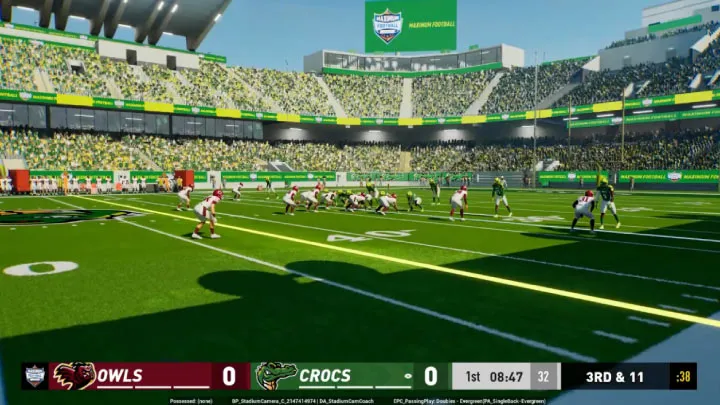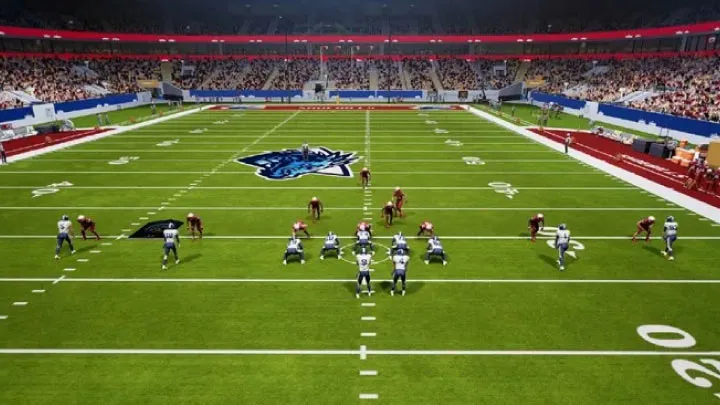Maximum Football 2025 is a football simulation game that combines realistic gameplay, deep strategy, team management, and customization options. Players take control of every aspect of the game from play calling, player positioning, and training, to in-game tactical adjustments. Success in Maximum Football 2025 requires understanding the mechanics of passing, running, defense, and special teams while developing a long-term strategy for your roster.
This guide provides step-by-step instructions on how to master Maximum Football 2025. From choosing the right plays, training athletes effectively, managing stamina and morale, to understanding defensive and offensive strategies, this article covers every essential aspect.
By the end of this guide, you will be able to make smarter decisions on and off the field, win more games, and create dominant teams capable of competing at the highest levels.
Section 1 Understanding the Basics of Maximum Football 2025

Before diving into advanced tactics, it is essential to understand the game mechanics. Maximum Football 2025 features realistic physics, play execution, and player AI. Knowing how players move, react, and interact with opponents forms the foundation of successful gameplay.
Familiarize yourself with offensive and defensive playbooks. Each play has different outcomes based on timing, positioning, and player stats. Learning how to read formations, anticipate opponents, and execute plays is critical for consistent success.
Additionally, understanding game flow such as downs, clock management, and field position is crucial. Players who can control pace and momentum often dominate matches even if their team has slightly lower stats.
Section 2 How to Build the Perfect Roster
Building a strong roster is key in Maximum Football 2025. Evaluate players based on speed, agility, strength, passing accuracy, tackling, and endurance. Balancing star players with reliable role players ensures consistency throughout the season.
Recruit or draft players based on team needs. For example, if your offensive line struggles against pass rush, prioritize strong blockers over flashy skill players. Similarly, invest in defensive players who can cover multiple positions if your team lacks depth.
Monitor player development. Training, morale, and playtime affect growth and performance. Rotate players strategically to prevent fatigue and maximize potential for high-stakes games.
Section 3 How to Master Passing and Offensive Plays
Passing is a cornerstone of successful football strategy. Learn to read defenses and adjust routes based on coverage patterns. Quick passes can neutralize aggressive defenders, while deep throws take advantage of mismatches in speed.
Timing is critical. Release the ball before defenders converge, and consider using motion plays or audibles to exploit weaknesses. Understanding player stats such as route running, catch ability, and awareness directly affects pass completion.
Develop a balanced offensive plan. Mix run and pass plays to keep defenses guessing. Over-reliance on one type of play makes your team predictable and easier to defend.
Section 4 How to Excel in Running Plays and Ground Strategy
Running plays rely on timing, blocking, and exploiting gaps in defensive formations. Learn how to read the defensive line and choose the optimal path for your running back.
Use a combination of inside, outside, and misdirection runs to confuse defenders. Lead blockers, motion, and shifts can create openings that turn short gains into significant yardage.
Player stats such as acceleration, vision, and strength determine the effectiveness of runs. Rotate backs to maintain freshness and prevent fatigue from reducing performance.
Section 5 How to Build an Effective Defensive Strategy

Defense wins championships. Understanding formations, coverage schemes, blitz timing, and player positioning is essential. Adjust your defense according to your opponent’s tendencies.
Mix zone and man coverage, disguise blitzes, and anticipate play calls. Defenders with high awareness and agility are effective at reading and reacting to plays quickly.
Tackle mechanics are critical. Proper timing and positioning reduce yardage and create turnovers. Defensive consistency often outweighs sheer talent in long games.
Section 6 How to Manage Special Teams Effectively
Special teams include kicking, punting, and return plays. Mastering these elements ensures optimal field position, scoring opportunities, and momentum control.
Practice timing and accuracy for field goals and extra points. On punt and kickoff returns, learn blocking schemes and timing to maximize yardage.
Special teams errors often swing close games. A well-coached unit adds reliability to your overall strategy and can make the difference in tight matches.
Section 7 How to Train and Develop Your Players
Player development in Maximum Football 2025 involves training drills, practice sessions, and simulated games. Focus on individual skills such as passing accuracy, speed, agility, and tackling.
Rotate training intensity to prevent fatigue. Overtraining decreases performance, while strategic rest periods enhance long-term growth. Monitor morale and satisfaction, as motivated players perform better during key plays.
Use stat analysis to identify weaknesses. Focus on improving skills that have the highest impact on your overall game plan. High-level players consistently refine abilities to maintain competitive advantage.
Section 8 How to Manage In-Game Adjustments and Audibles
Dynamic adjustments during gameplay are critical. Study your opponent’s tendencies and adjust your play calling to exploit weaknesses.
Audibles, motion plays, and defensive shifts allow you to respond to real-time conditions. Effective use of these tools requires understanding personnel strengths, formations, and situational awareness.
Maintaining flexibility and avoiding predictability is key. Teams that adapt in real-time outperform static strategies even against stronger opponents.
Section 9 How to Plan Game Strategy and Season Management
Successful seasons require long-term planning. Schedule rest, adjust intensity, and monitor player health to maintain peak performance throughout the season.
Analyze opponents ahead of matches. Knowing tendencies, key players, and typical formations allows tailored game plans that increase the likelihood of victory.
Track player statistics, performance trends, and injury risks. Strategic rotation and timely substitutions prevent late-season decline and maximize championship potential.
Section 10 How to Achieve Mastery and Consistent Wins
Consistency separates average players from champions. Focus on training routines, playbook mastery, defensive adjustments, and offensive efficiency.
Regularly review past games to identify mistakes, optimize plays, and refine strategies. Adapt to meta shifts, opponent styles, and team growth.
Players who maintain high situational awareness, plan ahead, and adapt quickly will consistently outperform opponents and achieve long-term success in Maximum Football 2025.
Conclusion
Maximum Football 2025 combines strategic planning, real-time decision making, team management, and skill execution into a deep and rewarding football experience. Mastery requires understanding offensive and defensive mechanics, player development, special teams, game adjustments, and season strategy. By following this guide, players can consistently win games, build strong teams, and excel in both competitive and casual play.
Summary
A complete guide to mastering offense, defense, player training, special teams, and strategy in Maximum Football 2025 for consistent wins and top performance.

















